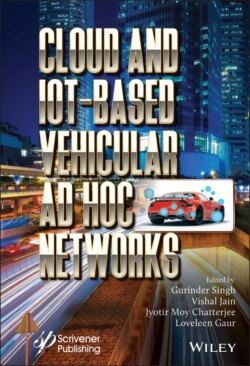Читать книгу Cloud and IoT-Based Vehicular Ad Hoc Networks - Группа авторов - Страница 13
1
IoT in 5th Generation Wireless Communication
ОглавлениеSandeep Mathur* and Ankita Arora
Amity Institute of Information Technology, Amity University, Noida, Uttar Pradesh, India
Abstract
During the last decade, the Internet of Things (IoT) has reformed the universal registering with a large variety of utilization worked around totally different styles of sensors. With an oversized portion of the problems at convenience and convention levels apprehended throughout the previous decade, there is a developing pattern in the change of integrity of detectors and sensor-based frameworks with digital framework. IoT advances, for instance, machine to machine correspondence supplemented with perceptive information examination is relied upon the qualitative fast moving computer networks. The event of distributed computing and its augmentation to mist worldview with a multiplication of savvy ‘shrewd’ gadgets is relied upon to steer additional advancement in IoT. These enhancements energize the United States and structure a plan to summary actual work, arrange new ways, and acknowledge new uses of IoT. Specialists, researchers, and designers face developing difficulties in structuring IoT-based frameworks which will proficiently be coordinated with the 5G (5th Generation) remote correspondences. 5G considered as a principal empowering agent in satisfying consistently expanding needs for the future “IoT” administrations, including high information rate, various gadgets association, and low assistance dormancy. To fulfil these requests, organize cutting and mist registering have been considered as the promising arrangements in the 5G administration. Nonetheless, security standards empowering validation and secrecy of 5G correspondences for the IoT administrations remains as the key element. Right now, proposing an effective supporting system has been proposed which will assist in the 5G- empowered IoT administration.
Keywords: IoT, 5G, wireless, energy efficiency, generic algorithm
